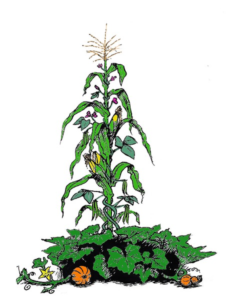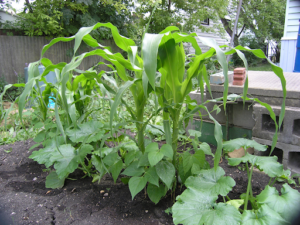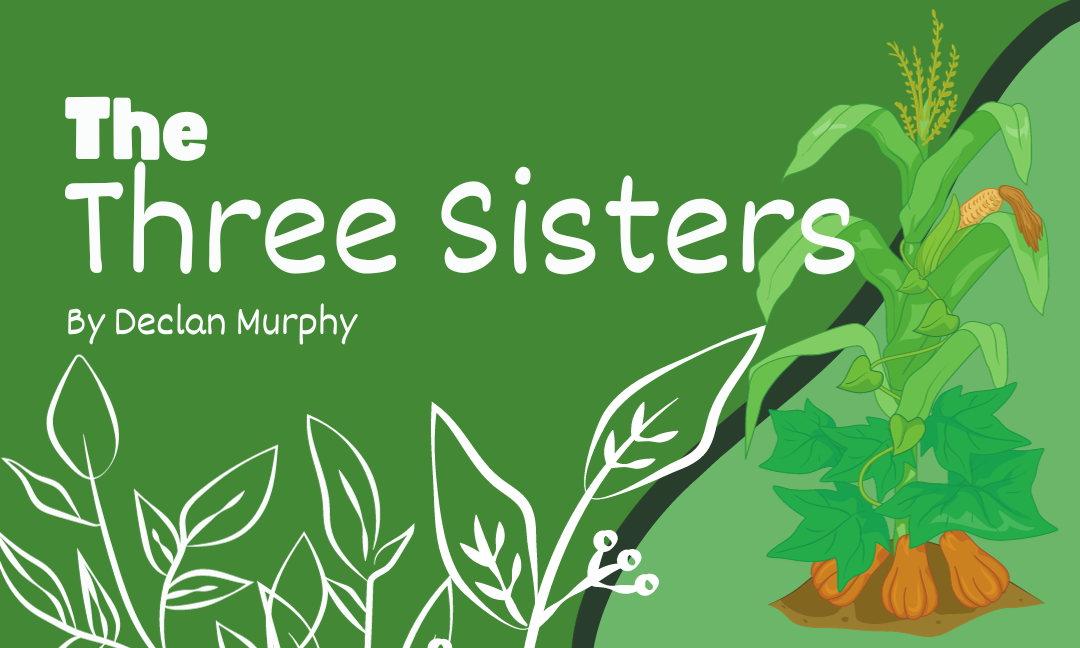Written by Declan Murphy
Edited by Shianne Liang
Designed by Kiritika Rana
Published by Kiritika Rana
Squash, corn and climbing beans are known as “The Three Sisters,” and they have ruled agriculture in Canada since before there was a “Canada”. Today, let’s appreciate these lovely siblings, as they continue to be great food for autumn.

All across North America, corn, beans and squash were staples of Indigenous agricultural practice and central to many of their traditional foods. Together, these three foods provide carbs, protein and vitamins. As well, they create amino acids that allow humans to thrive on a plant-based diet if hunting seasons were sparse, which make them incredibly complimentary and echoes the traditional stories of their origins.
According to the legends of the Haudenosaunee (a confederacy of six First Nations: the Mohawk, Oneida, Onondaga, Cayuga, Seneca and Tuscarora), the “Three Sisters” were the granddaughters of Sky Woman, the First Woman, who built Turtle Island. When their mother, the child of Sky Woman, was buried in the earth that her mother had created, the Three Sisters were born.
“They buried their mother and from her head grew o:nenhste, osahè:ta, onon’ónsera (corn, beans and squash); they are called Tionhnhéhkwen ne ne áhsen nikontate’kén:’a – sustainers of life.” (Kanehsatake Voices, 2017: 14)
Each sister was very different from the others – one was tall and had yellow hair, one wore all yellow and ran all over the place, and the other who wore green was very shy and could barely crawl on her own. Despite their differences, they shared sisterly love for each other and possessed individual characteristics the others needed. Together, they survived and thrived.
The Three Sisters were: Corn, with her yellow hair; Squash in her bright yellow dress; and Beans, who needed to rely on the strength of her sister Corn to get off of the ground.
The Three Sisters don’t just compliment each other nutritionally, but also function as a sophisticated symbiotic crop grouping. The corn provides a “bean pole” for the climbing beans, while the beans protect the corn from harsh weather and supply a good deal of rich nitrogen back into the soil. Lastly, the squash, which is spiny, protects all of the sisters from hungry animals, and provides shade with its large leaves to keep the soil moist. When grown together in clusters, the Three Sisters combine to provide water, food, shelter and support for each other, and are greater than the sum of their parts, just like the sisters in the legend.

Today, many gardeners plant “Three Sisters Gardens,” recognizing the wisdom and sustainability of this system, as well as celebrating the utility and lovely flavour of these three plants. It makes better use of water and actually reduces the amount of labour the plants require in order to produce.
If you’d like to grow your own Three Sisters patch, give it a try next spring! Mix compost into a fertile plot, and make a small hill, then plant the corn first, followed by the climbing beans, and lastly the squash. You can even include a fourth sister somewhere nearby – a locally indigenous flowering plant to attract more pollinators.
This method of agriculture is called “companion planting,” and it has survived via heirloom seeds and oral tradition for centuries in the Americas. It may be different from the organized rows of divided plants that you see in a lot of gardens, but the results will be worth the effort!
By far the most common dish to make with these crops is Three Sisters Stew/Soup. Though recipes vary widely between different groups or families, they all involve beans, corn, and squash. Often onions and other vegetables and seasonings are added, and simmered until ready to eat and share.
Here’s a recipe you can try! Enjoy!
Sources:
American Farm Bureau. (2016.) The Three Sisters
Anon. (2020.) What the story of the Three Sisters teaches us about farming – The Globe and Mail
Anon. (n.d.) Three Sisters (agriculture) – Wikipedia
Boeckmann, C. (2023.) Plant a Three Sisters Garden: Corn, Beans, and Squash | The Old Farmer’s Almanac
Braun, S. (2006) Image: The three sisters planting technique: Beans … | Flickr
Canada Food Guide. (n.d.) Three Sisters soup (corn, bean and squash) – Canada’s Food Guide
First Nations.org (n.d.) Three Sisters Soup | First Nations Development Institute
FTNI. (n.d.) Three Sisters | FNTI
Government of Canada. (2021.) The Three Sisters: Optimizing the value and food potential of an ancestral indigenous crop system
Indigikitchen. (n.d.) Three Sisters Soup – Indigikitchen
Kanehsatake Voices. (2017). KANIENKEHÁ:KA CREATION STORY
Marsh, E. (n.d.) The Three Sisters of Indigenous American Agriculture
Miles, G. (2021.) File:Three Sisters 4.jpg – Wikimedia Commons
Murphy, A. (2018.) Meet the Three Sisters Who Sustain Native America
Oneida. (2020.) The Legend of the Three SistersPace, K. (2015.) The Three Sisters – Sustainable Food Center

